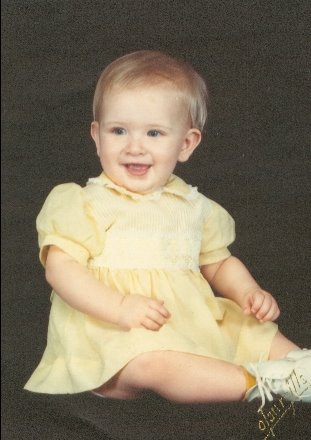Ella's Big Chance
Hughes, Shirley (written and illustrated). 2004. Ella’s Big Chance: A Jazz-Age Cinderella. New York: Simon & Schuster Books for Young Readers. ISBN: 0689873999
Ella is Mr. Cinders’—a widowed dressmaker—only daughter. Over her lifetime, Ella’s father teaches her everything he knows about fabrics and dressmaking—to the point that she becomes “as good a dressmaker as he was, if not better.” Though she only has two friends—an old grey cat and the dressmakers’ helper, Buttons—Ella is happy until the day her father decides to remarry. Ella’s new stepmother, Madame Renée, takes over the financial end of the business and her two beautiful daughters, Ruby and Pearl, model the dresses. The store’s newfound success is tainted by the fact that Ruby and Pearl lounge about, call Ella names like “Pudge” and “Carrots” (for her red hair) and finally end up sequestering Ella to a small room in the basement. Buttons helps keep her company from time to time by singing her songs or dancing with her. When the Duke of Arc invites everyone to a ball, Ruby and Pearl begin to fight over dresses and laugh at Ella when she, too, wonders what she’ll wear. Sitting sadly in the basement as her stepfamily drive away to the ball, Buttons offers to cheer her up with a spread of his specialty: bacon and eggs. But as he cooks, the doorbell rings and Ella’s Fairy Godmother appears on the doorstep. She turns Buttons’ bicycle into a Limo, the cat into a chauffeur and Ella’s drab black dress into “a ball dress as light as a silver cobweb, glittering all over with crystal beads.” Poor Buttons has to eat his bacon and eggs all alone as Ella is whisked away to the ball. Once there, the Duke takes an instant liking to her and they spend the entire evening dancing. But at the first stroke of midnight, Ella remembers that the magic will wear off. She runs as fast as she can, leaving a glass slipper on the stairs. The Duke, determined to find Ella, carries the slipper all over the city, letting all the beautiful women try it on until he finds Ella. He asks her to marry him, but she turns him down. She is in love with Buttons. The beautiful sisters try to convince the lovelorn Duke to marry one of them, but he refuses and flees the country to mourn Ella. In the end, Ella and Buttons run off to get married and start a dress shop of their own.
Ella’s Big Chance adds several new twists to the traditional Cinderella archetype. Instead of being a beauty of which the stepsisters are jealous, she is rounder and red-headed and the stepsisters are beautiful themselves. This makes Ella’s situation even more dire, but also renders her triumph that much sweeter. Also, though the Duke does become enchanted by Ella, instead of Ella being swept off her feet by a dashing rich man and waiting at home to be rescued, she turns down his proposal in favor of the one person who has been loyal and loving to her all along. The power dynamic is reversed and Ella is more in control of her own destiny than the put-upon “damsel in distress” of the traditional fantasy. In Ella’s Big Chance, our heroine has more agency. Whereas in the original tale, it is luck and magic which lead to Cinderella’s triumphant fate, in this version, it is more design, control and choice. Finally, the message that all sadness can be repaired by riches and sweeping-off-of-the-feet brand of love is replaced by a sweeter, humbler—and perhaps more reliable and realistic—love that was always there. Money has taken a secondary role to that of future dreams stemming from hope, will and hard work.
The colorful, whimsical illustrations do add to the story and speak of a new dawn of “princesses” whose inner beauty and independence are celebrated. Throughout the book, Ella wears a simple black dress, but you can see from her fashionable creations that there is just as much pleasure in the creation as in the wearing (perhaps yet another example of the reversed power dynamic). Just as in traditional illustrations of Cinderella, Hughes’ “messy” lines and fluid colors take us to a different time and place (the 20’s) which, though it may be closer to us, is nonetheless magical and fantastical.
School Library Journal (starred review) says, “Hughes’ gouache-and-pen-line illustrations exhibit her usual meticulous attention to detail, with the ball scenes inspired by Fred Astaire/Ginger Rogers movies, and the original dress designs by important French couturiers of the period. This insightful retelling also offers a fascinating visual peek at a glamorous time.”
Booklist says, “A stylish work, this is a bit of an indulgence for Hughes, and the high-fashion setting and the flapper costumes don’t add much to the tale for a young audience. The new ending will get their attention, however, and this self-empowered Cinderella makes for an interesting change of pace.”
Personally, I find this to be an excellent retelling for the modern girl. This book could be used in many discussions (empowerment, feminism, “true” love, contentment vs. extravagance, definitions of “beauty”, etc.) in ANY age group.
Ella’s Big Chance also earned the Kate Greenway Medal for Children’s Illustration.
Reviewed by Joelie Key-Tissot 09/21/06


0 Comments:
Post a Comment
Subscribe to Post Comments [Atom]
<< Home